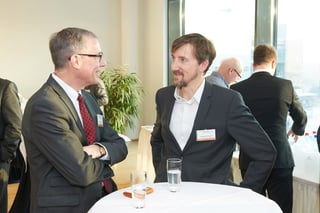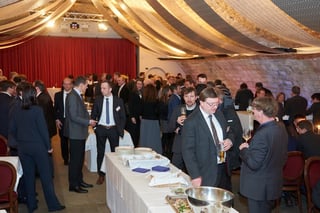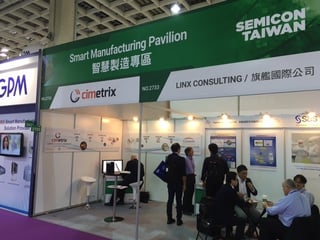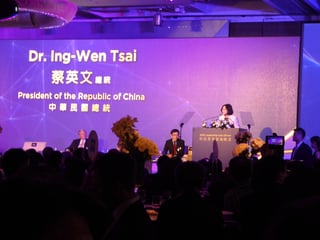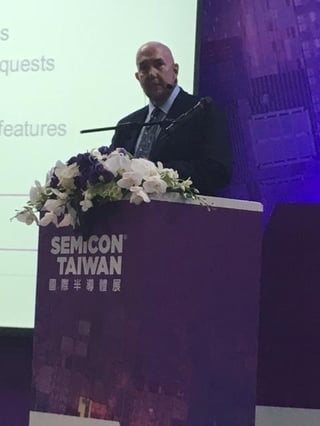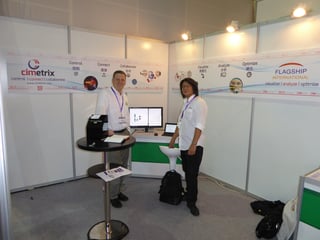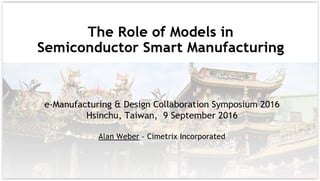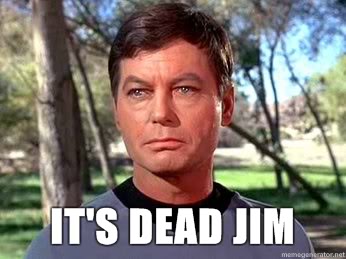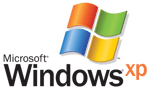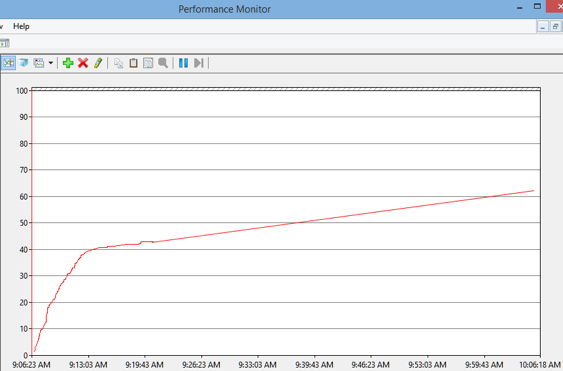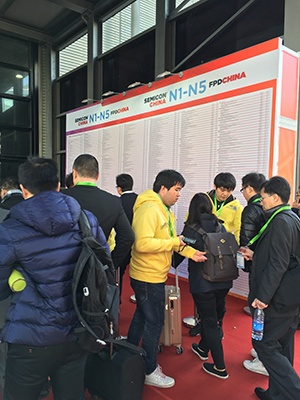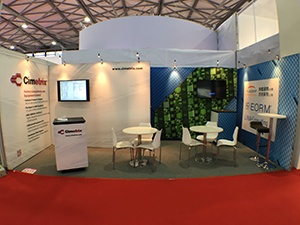
Join us as we meet the Leadership Team of Cimetrix in this first post of our “Meet the Team” series
Bob Reback — has served as President and CEO of the company since June 2001. Bob joined Cimetrix as Vice President of Sales in January 1996, was promoted to Executive Vice President of Sales in January 1997, and became President on June 25, 2001. Bob grew up in Wisconsin and is an enthusiastic Green Bay Packers fan. We talked to Bob about how he got started at Cimetrix, the makings of a good CEO, and the challenges of running a global business.
-----
What brought you to Cimetrix originally?
My background was in robotics and factory automation. I worked at Texas Instruments in the ‘80s when TI’s business was booming and had the opportunity to deploy leading robotics and factory automation technologies of that era. I became involved in the semiconductor industry in the mid-80s with an important project which was one of the first applications of clean-room robots and the SEMI Equipment Communications Standard (SECS) to fully automate a lithography bay. This led to additional factory automation projects with the world’s leading semiconductor manufacturers, including the first uses of the new Generic Equipment Model (GEM) standard. In the early ‘90s, I moved to California to work for FANUC Robotics, the world’s largest robot maker. While at FANUC Robotics, Cimetrix called and recruited me. Cimetrix had a unique concept for a PC-based open architecture robot controller, which had the potential to disrupt the growing robotics industry.
What’s your favorite thing about working at Cimetrix?
There are several things that get me really energized. The first is meeting with a client who is an enthusiastic reference for Cimetrix. Fortunately, these meetings now occur on a frequent basis, and have become our expectation. These meetings are very enjoyable and personally satisfying, as I get to hear wonderful stories about how Cimetrix team members worked hard and took extra care to help our clients. The second thing is seeing the individual professional development of the great people who work at Cimetrix. We invest a lot in building the Cimetrix culture, emphasizing continuous improvement, and establishing shared values. It is a joy to see Cimetrix employees grow in not only the skill sets of their craft, but also in their professional careers.
What do you think makes a good CEO?
Well, I believe there are a number of things necessary to be a good CEO. First, I believe the focus must be on creating long-term value and building a company that lasts. This means looking at “What is best for Cimetrix?” over the long term. You must consider the interests of shareholders, clients and employees, while also ensuring every decision reflects the Company values. I believe the values and culture of the company start at the top. The CEO must personally possess the values he or she wants in the company, and demonstrate those values by example. They can’t just appear on a poster on the breakroom wall - you’ve got to really live and breathe them. They should be communicated and celebrated regularly, and there must be consequences for those whose actions do not reflect the company’s values.
Second, being a good CEO means being a good teacher who is able to listen, understand, empathize, and mentor. To do this, the CEO must be secure in his position - slow to blame others for problems, and quick to give credit to others when good things happen.
In addition, I believe the CEO must have passion and perseverance in the business. You never know what challenges may arise, and the CEO must be ready and able to lead the team in overcoming whatever obstacles the world may throw at us. It’s important for the CEO to have passion in order to articulate and reach alignment on the vision for the company, because you need people to be excited and energized about their role in fulfilling that vision.
Do you have a favorite quote?
People at Cimetrix know I read a lot of biographies, and can pull out quotes for almost any occasion. If I had to choose one favorite, I would go with the classic Vince Lombardi, “The will to win is not nearly so important as the will to prepare to win.”
How do you deal with challenges that come up in your work life?
First I refresh my memory and review what were the real goals and objectives we were trying to achieve. Then I try to understand the possible options, how much time we have to make a decision, and whether or not we have time to gather more data. We also always check to ensure that any decision reflects our company values, and discard options that might not reflect them.
What do you like to do in your free time?
I love to read on a wide variety of topics, especially history and biographies. I believe in doing some physical exercise on a daily basis, which might be running, biking, golfing, or skiing. I’ve also developed an interest in mindfulness and meditation which has led to some formal classes, retreats, and a regular yoga practice.
What’s the best thing that’s happened to you in your time working at Cimetrix?
Without a doubt, it would have to be all the wonderful people I’ve come to know, which includes clients, shareholders and employees. It also gives me genuine pleasure to see the company grow, and to work with satisfied clients and the truly great team of people we have here at Cimetrix. We’ve invested a lot in continually improving our software products, and know our clients can use our products to achieve success in their projects. We’re also seeing the financial rewards that come with that growth, using our profits to invest in some new products and markets to support that growth over the long term. It’s exciting for me to consider what’s possible in the next phase of our evolution as a company. We have a clear vision for how we can grow our markets, expand our product offerings, add more value for our clients, and do all that in a way that provides a good return to our shareholders.
Finally, we know you travel quite a bit with your job. What have you learned from your travels?
For the past 20 years, Cimetrix has developed a client base across the US, Europe and Japan. This has provided many opportunities to travel to semiconductor regions in the US, such as the Bay Area, Portland, Phoenix, Austin, Boston and many other cities. We have clients in almost every European country, each with its own culture and work habits. Japan was the first Asian country in which we developed a meaningful client base. Japan requires a lot of patience as it has a unique culture, but once you establish a solid reputation and client base, it is a great place to do business.
Recently we’ve been developing business opportunities in Taiwan, Korea, China and southeast Asia. It has been fascinating to recruit staff and open offices in these areas, as each country has its unique ways of doing business. Cimetrix has become a truly international company with a diverse group of employees, as we now have employees from many different countries.
If I had to summarize what I’ve learned, it is that even though we have employees and clients from a wide range of backgrounds and perspectives, we also share many similarities. People want to be treated with respect, they want to be appreciated for their contributions, they want to be part of a team in which they take pride, and everyone wants to provide a good living for their family. I am convinced we can build a great company with employees from many different backgrounds while also having a shared Cimetrix culture and set of values.
-----
Thanks Bob for a great interview!


 Cimetrix was one of the sponsors of the conference. Dresden is hot bed for semiconductor manufacturing in Europe. In fact, 50% of the chip output from Europe comes from Dresden. The conference is organized by the Automation Network Dresden which consists of 5 Dresden based companies; AIS, HAP, Ortner, SYSTEMA and Xenon. SYSTEMA is a Cimetrix partner and helps us with integration projects.
Cimetrix was one of the sponsors of the conference. Dresden is hot bed for semiconductor manufacturing in Europe. In fact, 50% of the chip output from Europe comes from Dresden. The conference is organized by the Automation Network Dresden which consists of 5 Dresden based companies; AIS, HAP, Ortner, SYSTEMA and Xenon. SYSTEMA is a Cimetrix partner and helps us with integration projects. 